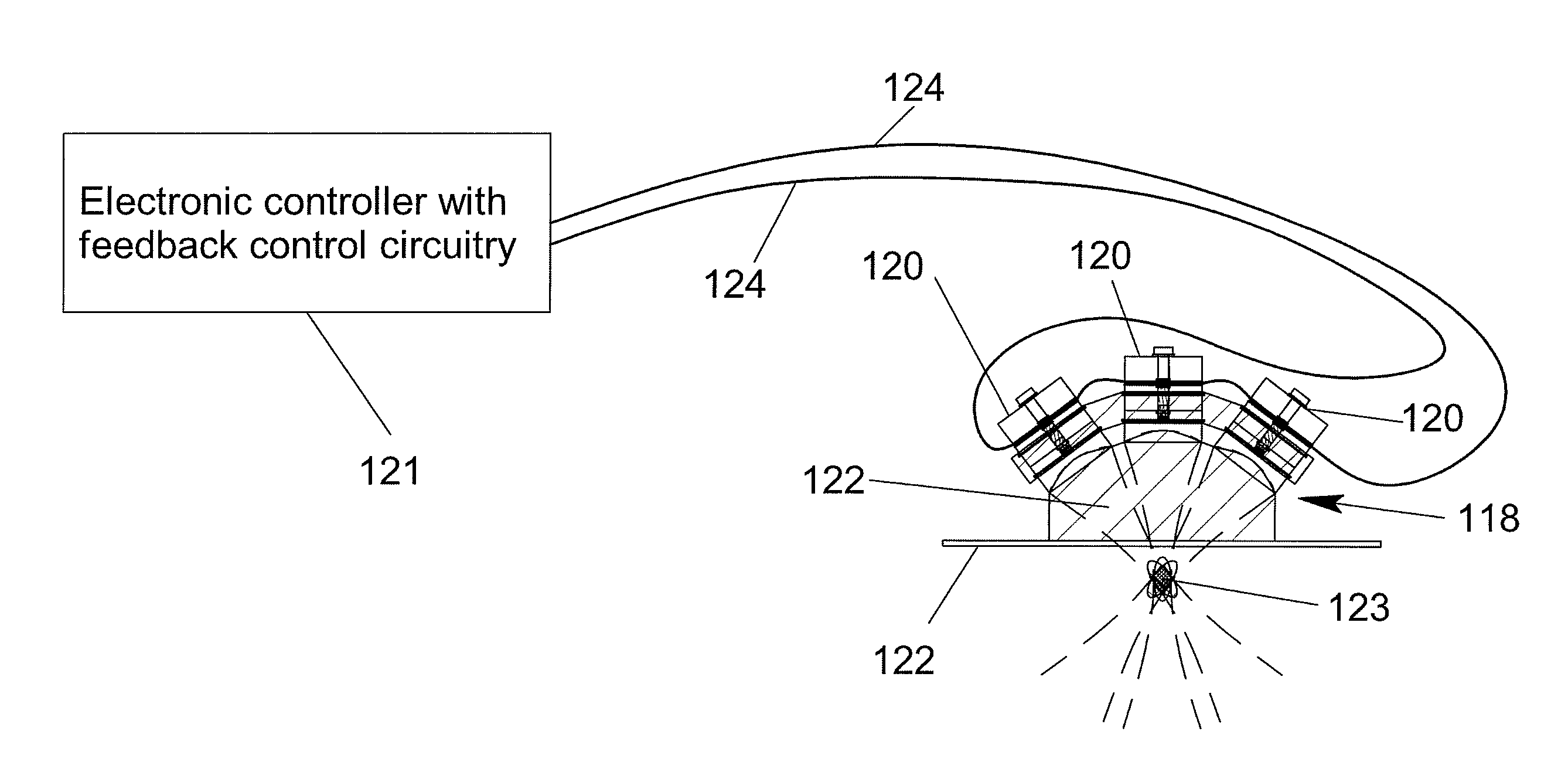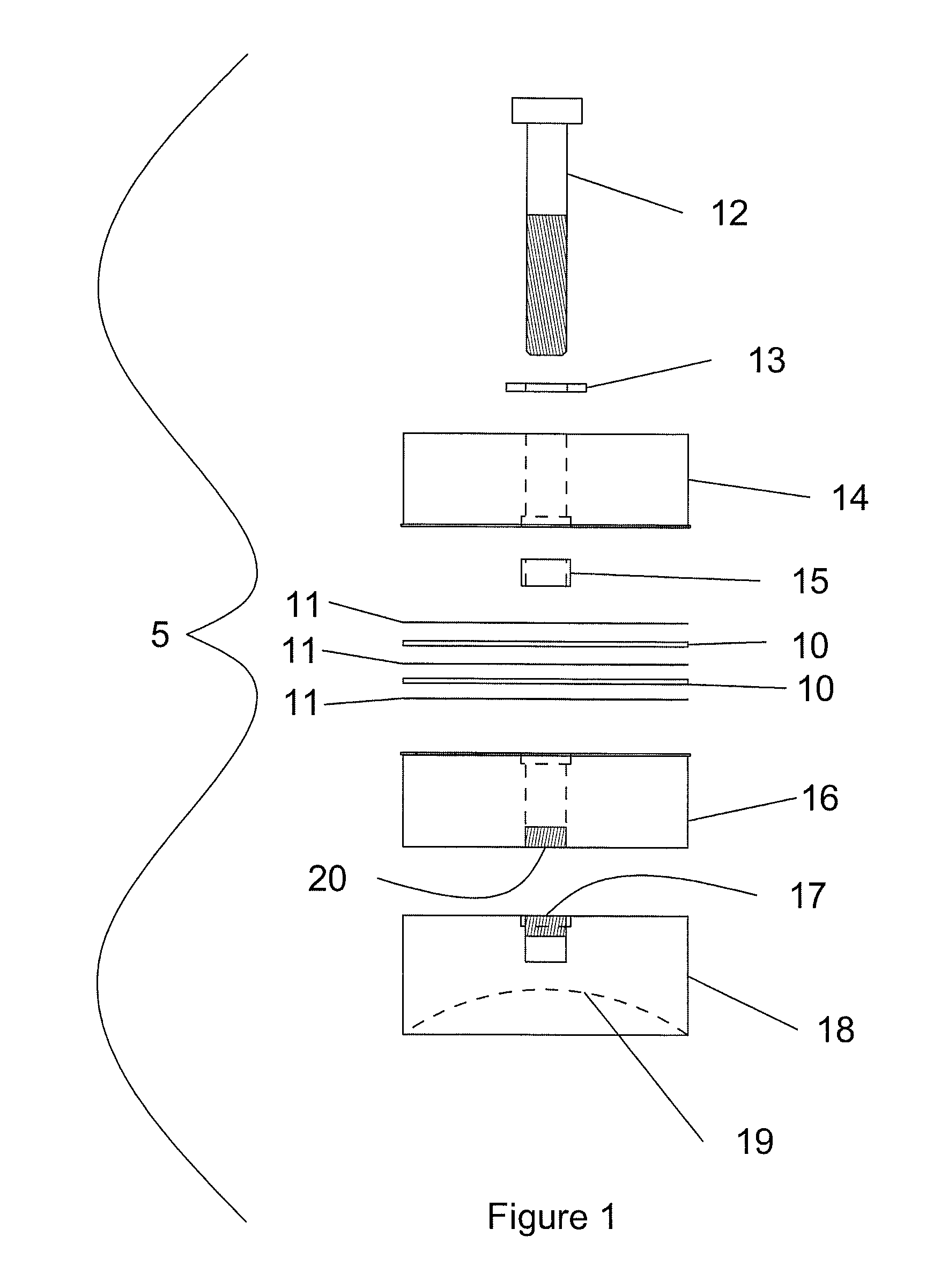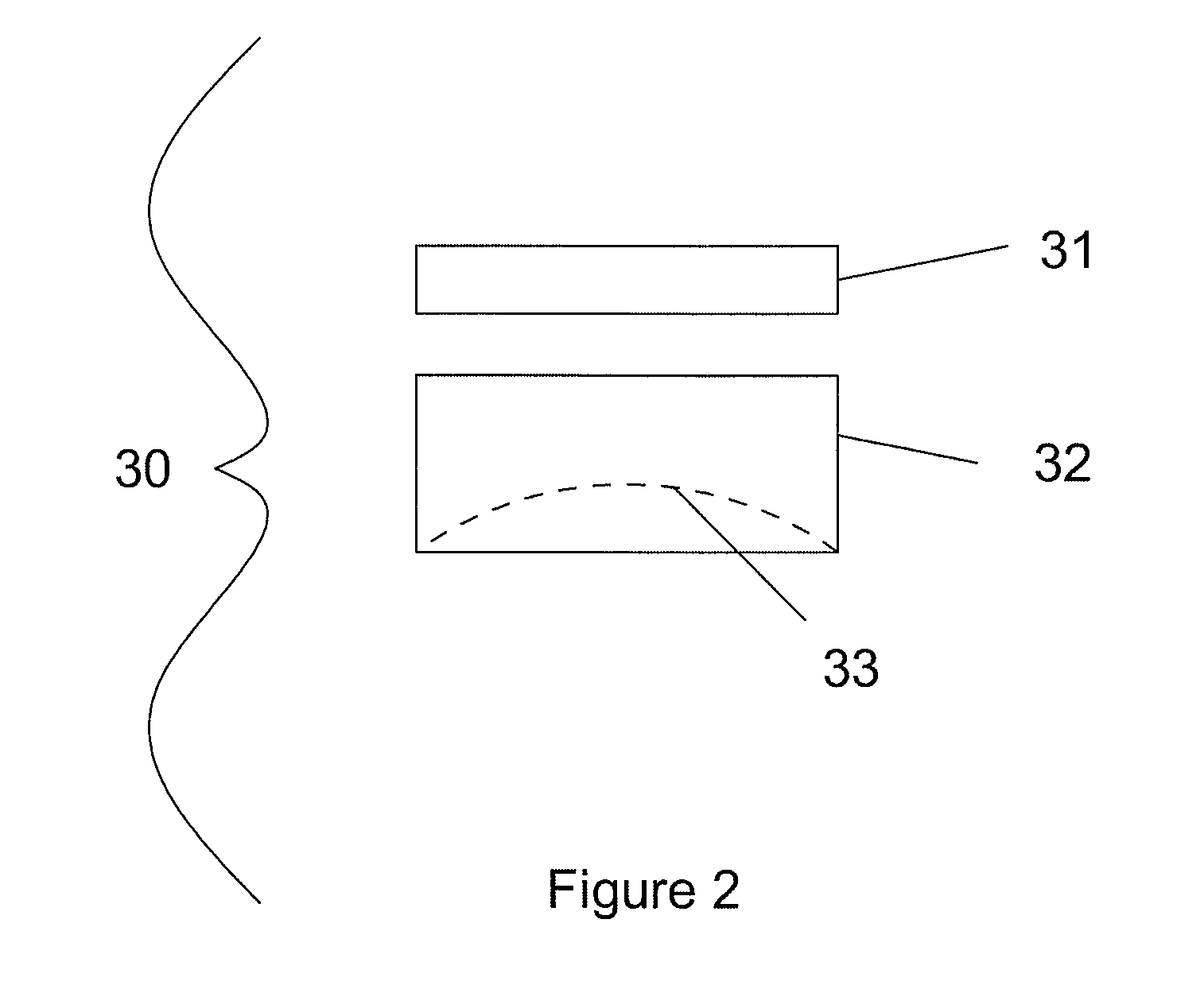Non-invasive ultrasonic soft-tissue treatment apparatus
a non-invasive, ultrasonic technology, applied in the field of non-invasive soft tissue treatment apparatus, can solve the problems of inability to geometrically focus at depths appropriate for adipose tissue, inability to use geometrically focused lenses, and inability to perform treatment in an uncomplicated manner, so as to minimize trauma, reduce healing time, and maximize the destruction of adipose tissue
- Summary
- Abstract
- Description
- Claims
- Application Information
AI Technical Summary
Benefits of technology
Problems solved by technology
Method used
Image
Examples
Embodiment Construction
[0049]The acoustic assembly of the apparatus may be of any design operable to generate geometrically focused ultrasonic energy. To provide the geometric focusing of the ultrasonic energy, an acoustic assembly may have an ultrasonic transducer that generates ultrasonic energy and an acoustic lens oriented to geometrically focus ultrasonic energy generated by the ultrasonic transducer. By ultrasonic transducer it is meant a structure within the assembly that converts electrical energy into ultrasonic acoustic energy. One embodiment for an acoustic assembly is shown in FIG. 1. FIG. 1 shows a side view of an assembly drawing of a single acoustic assembly 5 having a ‘bias design’. ‘Bias design’ refers to a design approach where piezo-electric ceramic elements are held under compressive stress, or compression bias. This design approach retains the piezo-electric ceramic elements in compression as they vibrate, hence reducing and preferably eliminating tensile stress in the piezo-electric ...
PUM
 Login to View More
Login to View More Abstract
Description
Claims
Application Information
 Login to View More
Login to View More - R&D
- Intellectual Property
- Life Sciences
- Materials
- Tech Scout
- Unparalleled Data Quality
- Higher Quality Content
- 60% Fewer Hallucinations
Browse by: Latest US Patents, China's latest patents, Technical Efficacy Thesaurus, Application Domain, Technology Topic, Popular Technical Reports.
© 2025 PatSnap. All rights reserved.Legal|Privacy policy|Modern Slavery Act Transparency Statement|Sitemap|About US| Contact US: help@patsnap.com



